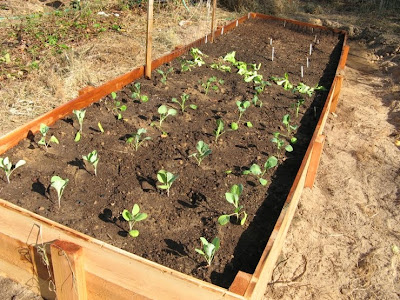My sister gave me a sack of fresh figs the other day and after eating some of them, I started wondering if they would be good in cake form. I imagined a dense, moist cake with a sticky glaze, slightly spicy but not as potent as a true spice cake. After looking through a few cookbooks and doing a few web searches, I ended up making up my own hodgepodge recipe, based on the Fig and Cornmeal Cake recipe in the book,
Cake Keeper Cakes. Here is what I came up with:
Cake:1 cup all-purpose flour
1/2 cup cornmeal
1 teaspoon baking powder
1/4 teaspoon baking soda
1/2 teaspoon salt
1 teaspoon cinnamon
1/4 teaspoon mace
1/2 cup butter, softened
1 cup sugar
2 large eggs
1/2 teaspoon grated lemon zest
scant 1/2 cup buttermilk
1 cup coarsely chopped fresh figs
1/3 cup chopped pecans
Preheat oven to 350F. Butter and flour a 9" round cake pan (I use Baker's Joy for this).
In a small mixing bowl, combine the flour, cornmeal, baking powder, baking soda, salt, cinnamon and mace. Set aside.
In a large mixing bowl, beat together the butter and sugar with an electric mixer until light and fluffy. With the mixer on low, add the eggs, one at a time, and beat until incorporated. Stir in the lemon zest and buttermilk. Add the flour mixture in three additions, stirring until just incorporated each time. Stir in the figs and pecans.
Scrape the batter into the prepared pan and smooth the top of the batter. Bake until a toothpick inserted near the center comes out clean, 35 to 40 minutes. Let the cake cool in the pan for a few minutes, then remove from the pan and cool right side up on a wire rack until completely cool.
Just before serving, transfer the cake onto a cake plate and poke holes over the entire surface of the cake with a skewer or fork. Pour the buttermilk glaze over the cake and let soak in briefly. Slice and serve.
Buttermilk Glaze1/2 cup sugar
1/4 cup butter
1/4 cup buttermilk
1/2 tablespoon light corn syrup
1/2 teaspoon vanilla
Combine all ingredients in a small sauce pan and bring to a boil. Reduce heat and cook, stirring often, for 3 minutes. Remove from heat and let cool for 2 to 3 minutes. Pour over cake.
The results: It was quite nice! The buttermilk glaze really makes it, in my opinion. I'm also experimenting with mace, after learning that it was my grandfather's secret ingredient in many of his baked goods (he had a bakery). Spork's first bite yielded a garbled, "Ohmygod!" so I took that as a positive review, also. :)













